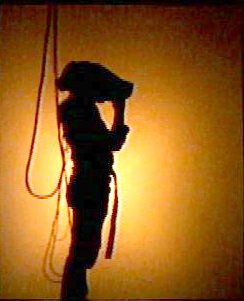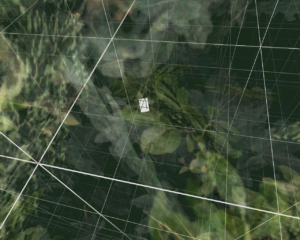In it’s day, Osmose was ground-breaking. However, even today, there’s been little like it. Created by Char Davies and a team of developers (including Georges Mauro, John Harrison, Rick Bidlack, and Dorota Blaszczak), it was one of the first virtual reality experiences to feel like a full place, not merely a new one. Contrasting with the spare, vast, open spaces of contemporary VR experiences, Osmose was rich, detailed, and truly immersive. It used a nearly 10-fold increase in computing power to layer the rich, translucent imagery in an enveloping panorama (and once of the first spatial audio systems, as well).
But, visuals aside, what truly set Osmose apart was it’s novel, ingenious navigation. Since Osmose was meant as a quiet, slow, and reflective experience, Davies drew on her experience as a diver (and was, no doubt, inspired by her dives) to design a mode of navigation that relied on breath instead of directions from a glove. The main interface was a sensor strapped to the chest that could tell inhale from exhale. The combination of forcing users to concentrate on their breath meant that it slowed them down form the typical point-and-shoot VR of the time (and since). This not only helped relax users and put them into a more serene mood, it effectively compensated for the massive processing power needed to create the visuals and audio that would, otherwise, lag and fracture if moving quickly. It solved a technological problem with an interface that also made the experience more human.
In addition to the breath interface that allowed users to rise and fall in the scene, there were also elements that responded to different behaviors. In particular, there are objects and events within the system that only trigger when approached slowly, versus quickly.
There are plenty of lessons to learn from this experience that would benefit any present-day VR/XR system. Too much of the development of the latest systems assume limited kinds of experiences and obvious modes of interaction. I’ll cover Placeholder, a contemporary VR project in a future BLAST but VR/XR systems today need to address the whole body, not merely the easiest mechanisms of control (like fingers and hands). Presence was always connected to the body more than the eyes. Audio and video, of course, need to be synchronized to create a believable illusion but they’re not enough to convince us we’re in another space for long.
Experience Design 1.2: pages 120-121




Recent Comments